What is 4/4 Printing, 4/1 Printing, and 4/0 Printing?
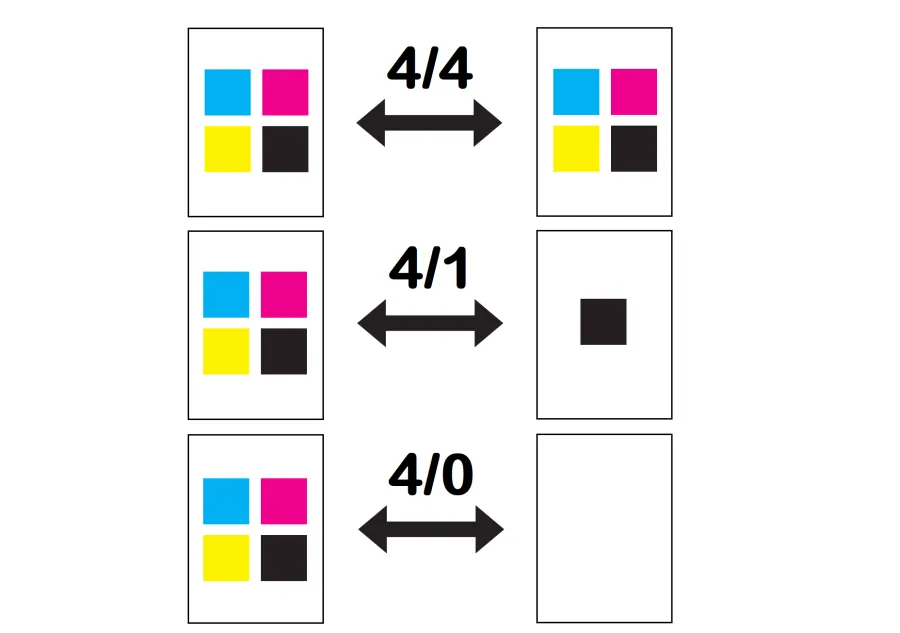
estimated reading time: 4 minutes
The printing industry has its own unique language. Like many
industries, the language of printing includes a variety of acronyms, symbols, and
abbreviations. These brief expressions act as a type of industry shorthand to designate
certain printing specifications and processes in a more expedient manner.
When providing the specifications of a print project, one
requirement is to state the color of the inks that are to be printed. For
example, will a sheet be printed in full color, black ink only, one or more PMS
colors, or a combination of these methods?
Another necessary detail is the placement of the ink. Specifically,
will both sides of a sheet be printed or will just one side be printed?
Both of these specifications - ink color and ink placement -
can be quickly relayed using 4/4, 4/1, 4/0, 1/1, 1/0 and similar expressions.
These look like Math terms...Yikes!
Though these terms appear in a format similar to the division
problems or fractions you encountered in elementary school, these terms have
nothing to do with math, division, or fractional dimensions.
The number before the "/" simply represents the ink on the face, or side one, of a sheet. The number after the "/" represents the ink on the reverse, or side two, of a sheet.
Also, when verbalizing these terms, the "/" is spoken as "over." Thus, 4/4 translates to "Four over Four", 4/1 translates to "Four over One" and 4/0 translates to "Four over Zero."
Keep reading for explanations of what the numerical
components of these terms mean and the important role they play in providing accurate printing
specifications.
What does 4/4 mean in Printing?
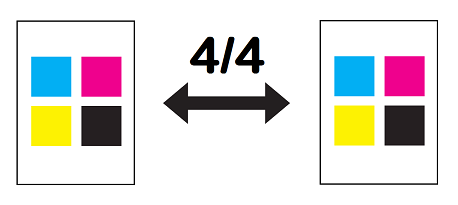
You may be surprised to learn that Full-Color printing is
achieved by using only four (4) ink colors - Cyan, Magenta, Yellow and Black. Known
collectively as CMYK, these four ink colors are layered in various concentrations
to produce full color images.
Related Article: What is CMYK?
Because the CMYK printing process uses four ink colors, it
is commonly known as 4-Color Printing. Hence, 4/4 means the face of a sheet (side
one) and the reverse of a sheet (side two) are both printed with the 4 ink
colors of CMYK. In other words, both sides are printed in full color.
So instead of having to write or say "side one is to have 4-Color
CMYK printing and side two is also to have 4-Color CMYK printing" we just write "4/4" or say "Four over Four."
What does 4/1 mean in Printing?
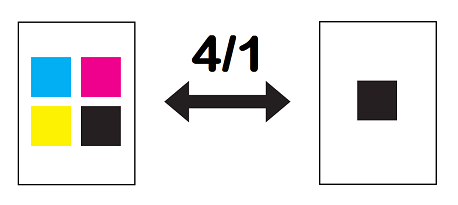
Since we just explained that the "4" designates 4-Color printing (a.k.a. CMYK printing or Full-Color printing) it will come as no surprise that the "1" refers to a single ink color.
But which color? Well, 99% of the time,
the "1" designates Black ink. In fact, unless there is a specific color listed after the "1", it is generally assumed that the "1" refers to Black ink. However,
for the sake of clarity, it is always better to list the color by name, even if
the color is Black.
Along these same lines, the "1" could also refer to a PMS color
(from the Pantone Color Match System). In this case, it is imperative that the color be clearly
identified. For example: 4/1 PMS 362 Green or 4/1 Pantone 032 Red.
What does 4/0 mean in Printing?
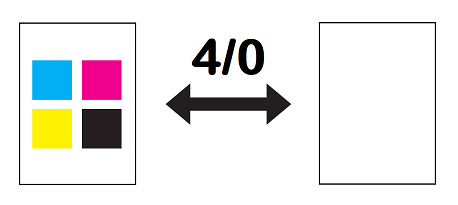
We know that the "4" refers to 4-Color printing so side one
will print in full color (CMYK). The "0" means that side two receives no ink…it
is left completely blank.
What do terms like 4/0/0/4 or 4/1/0/4 mean?
When relaying specifications for the cover of a book, some people
will combine the specs for the front cover and back cover and show it as 4/0/0/4, 4/1/0/4 or something similar.
Relying on the knowledge that we've learned thus far, we can determine that 4/0/0/4
translates to 4-Color printing on the outside front cover, no printing on the
inside front cover, no printing on the inside back cover, and 4-Color printing
on the outside back cover.
Likewise, 4/1/0/4 translates to 4-Color printing on the outside front cover, one ink color printed on the inside front cover (usually Black but could be a PMS color), no printing on the inside back cover, and 4-Color printing on the outside back cover.
What does 1/1 mean in Printing?
The expression 1/1 means there is 1 ink color printed on side one of a sheet and 1 ink color printed on side two of a sheet. The term 1/1 is verbalized as "One over One."
Similar to what was mentioned above, the 1/1
designation usually means both sides are printed in Black ink. But, one or both
colors could be PMS colors. This is why the colors need to be clearly
identified.
What does 1/0 mean in Printing?
The specification of 1/0 means there is 1 ink color printed
on side one of a sheet and side two is not printed. Again, the ink color on
side one will need to be clearly identified.
Occasionally, you may encounter other print specifications similar to those we've discussed. For example, the terms 2/2, 2/1, or 2/0 are commonly used for business cards printed with PMS colors. Applying the same methodology explained above, it can be determined at a glance which side(s) will receive ink and how many ink colors
will be applied.
The printing industry often uses terms that can be difficult
to decipher without a thorough explanation. Hopefully, we have clarified the meaning of
4/4, 4/1, 4/0, and similar terms for you.
Be sure to give Color Vision a call at 800-543-6299 whenever
you have a need for custom printing, whether it is printed in full color, black
ink, PMS colors, or any combination of these methods.
By the way, if you would like to submit a quote request, simply
click here and we will email you a quote. As always, we look forward to
assisting with your print projects!
Related Articles
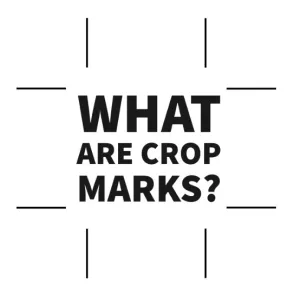
Printing Terminology: What are Crop Marks?
Read This Article
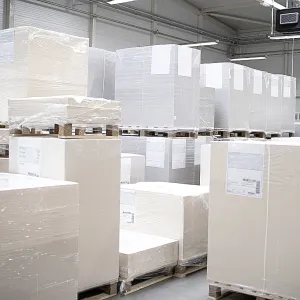
Printing Terminology: What is a Printer’s House Sheet?
Read This Article

Printing Ink: What does “Heavy Coverage” mean?
Read This Article
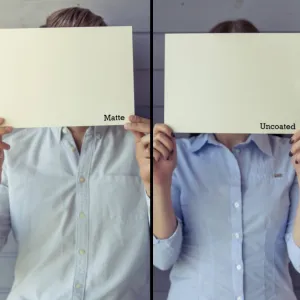
Matte vs Uncoated: Which Paper is better for your Project?
Read This Article